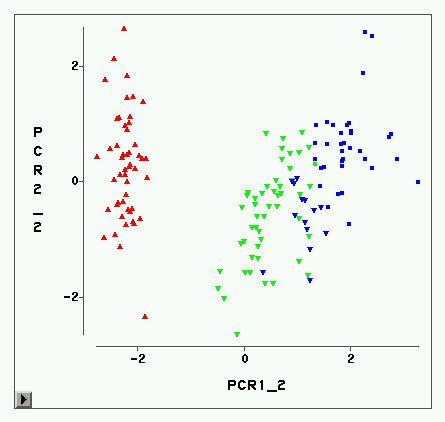Research data are often released upon journal publication to enable result verification and reproducibility. For that reason, research dissemination infrastructures typically support diverse datasets coming from numerous disciplines, from tabular data and program code to audio-visual files. Metadata, or data about data, is critical to making research outputs adequately documented and FAIR. Aiming to contribute to the discussions on the development of metadata for research outputs, I conducted an exploratory analysis to determine how research datasets cluster based on what researchers organically deposit together. I use the content of over 40,000 datasets from the Harvard Dataverse research data repository as my sample for the cluster analysis. I find that the majority of the clusters are formed by single-type datasets, while in the rest of the sample, no meaningful clusters can be identified. For the result interpretation, I use the metadata standard employed by DataCite, a leading organization for documenting a scholarly record, and map existing resource types to my results. About 65% of the sample can be described with a single-type metadata (such as Dataset, Software or Report), while the rest would require aggregate metadata types. Though DataCite supports an aggregate type such as a Collection, I argue that a significant number of datasets, in particular those containing both data and code files (about 20% of the sample) would be more accurately described as a Replication resource metadata type. Such resource type would be particularly useful in facilitating research reproducibility.
翻译:暂无翻译




